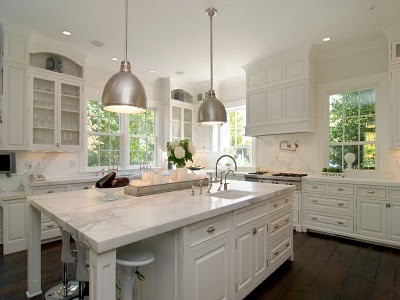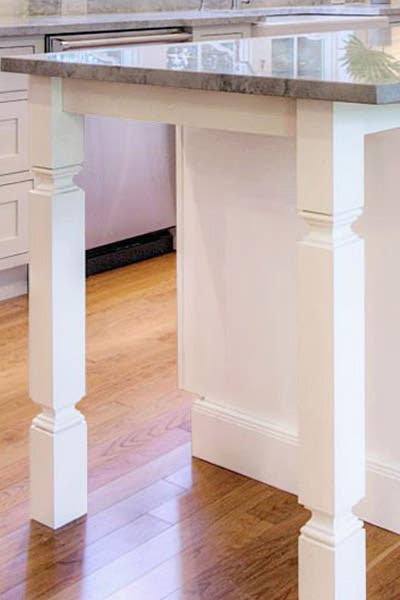An Overview to Choosing the Perfect Legs For Kitchen Island for Your Home
Choosing the ideal legs for your kitchen island is a nuanced decision that affects both the performance and aesthetic appeal of this main space. As you consider these components, it ends up being noticeable that the appropriate legs can change not only the appearance of your kitchen area however additionally its functionality for years to come.

Comprehending Kitchen Area Island Legs
When selecting legs for a cooking area island, it's necessary to recognize their aesthetic and useful functions in the general design. The legs serve as a vital support group, making certain security and toughness for the island, which often functions as a workspace, eating location, or collecting area. As a result, the selection of product and construction method have to be durable sufficient to withstand everyday usage and potential wear.
Along with their structural obligations, legs add considerably to the island's aesthetic charm. They can boost the kitchen's design, whether via conventional, modern, or diverse styles. The elevation and percentage of the legs are additionally vital considerations; they need to harmonize with the island's countertop height while making sure comfortable seating for those utilizing the area.
Moreover, the leg style can affect the overall flow of the cooking area. Open, ventilated leg styles can create a feeling of agility, while solid, substantial legs may share an extra based and stable aesthetic - Legs For Kitchen Island. Comprehending these functional and visual aspects will guide house owners in making educated selections that complement their cooking area's layout and boost its use
Popular Styles and Products
The option of legs for a kitchen island incorporates a range of prominent styles and materials, each offering special qualities that can boost both functionality and looks. Amongst the most popular styles are modern, rustic, and conventional. Contemporary legs commonly include sleek, minimalist layouts that highlight simpleness and clean lines, making them suitable for contemporary kitchen areas. Rustic designs, on the other hand, welcome natural environments and commonly showcase reclaimed wood or distressed finishes, including warmth and beauty to the area. Traditional legs commonly exhibit ornate information and workmanship, boosting traditional cooking area layouts.

Height and Stability Considerations

Stability is another crucial consideration. The legs of the kitchen island should provide adequate support, making sure that the structure can hold up against day-to-day usage without changing or wobbling. Material option plays a significant duty in stability; metal legs, as an example, tend to offer higher stamina compared to timber. Additionally, guaranteeing that the island is firmly anchored to the floor or wall can enhance stability, especially for bigger islands that may bear considerable weight.
Matching Your Cooking Area Visual
Picking the appropriate legs for your kitchen area island goes past capability; it Going Here also plays a considerable duty in the general visual of the space (Legs For Kitchen Island). When selecting legs, consider the design style of your kitchen.
Shade is one more critical aspect. Legs that match or comparison with your island's surface and surrounding kitchen cabinetry can produce aesthetic consistency or striking centerpieces. Matching dark timber legs with a light marble countertop can include deepness and interest. Additionally, consider the finish of the legs; matte, glossy, or textured finishes can considerably impact the total feel of the kitchen.
Installation and Maintenance Tips
Installing kitchen island legs calls for cautious attention to information to ensure both security and visual appeal. Make use of a stud finder to locate wall studs if you are affixing the legs to a wall or utilizing braces for added assistance.
When safeguarding the legs, use high-quality screws and, if needed, timber glue for extra toughness. For steel legs, guarantee that you are utilizing ideal anchors and tools to avoid damages to your flooring. It is recommended to examine for levelness after installation, making adjustments as needed to prevent tottering.
Tidy the legs with an ideal cleaner, staying clear of unpleasant products that might scrape the surface. By following these installation and maintenance pointers, you can make certain that your cooking area island legs continue to be both practical and visually appealing.
Final Thought
In final thought, selecting the proper legs for a kitchen island demands careful factor to consider of height, stability, and aesthetic compatibility. Inevitably, thoughtful leg choice plays a crucial function in boosting both the functionality and layout of the kitchen room.
When selecting legs for a kitchen area island, it's important to recognize their functional and aesthetic functions in the general design. Open, ventilated leg styles can produce a feeling of lightness, while solid, significant legs might communicate an extra Check Out Your URL grounded and steady visual. The legs of the cooking area island ought to supply sufficient support, making certain that the structure can stand up to day-to-day use without shifting or wobbling.Mounting cooking area island legs requires careful interest to information to make certain both stability and aesthetic charm.In final thought, picking the appropriate legs for a kitchen island requires cautious factor to consider of elevation, security, and visual compatibility.